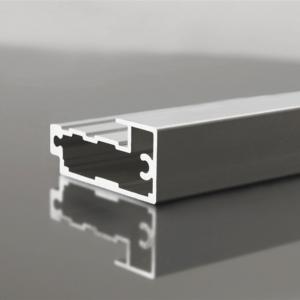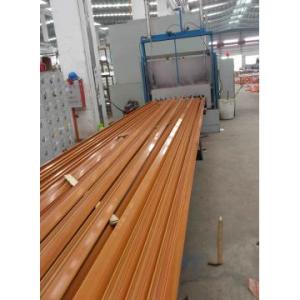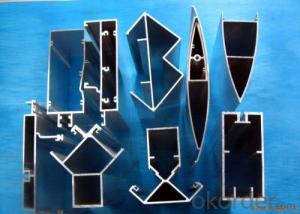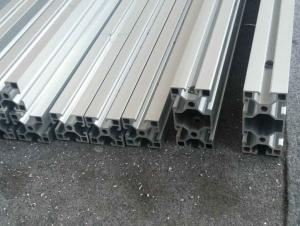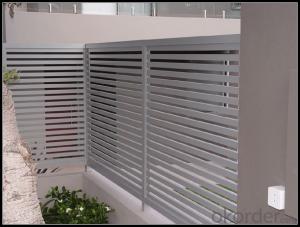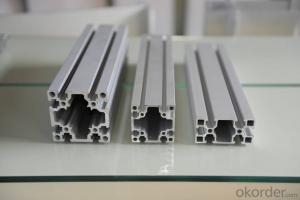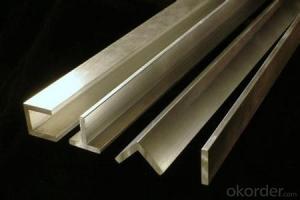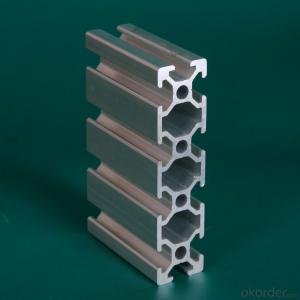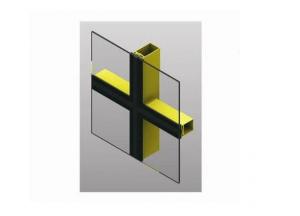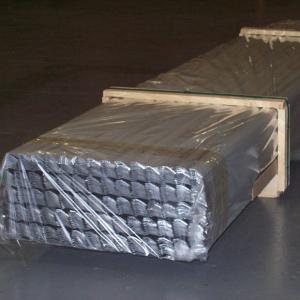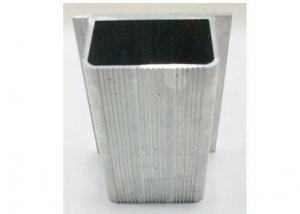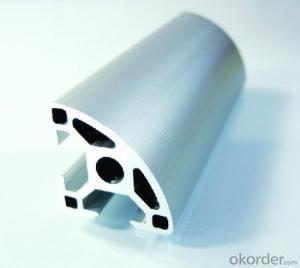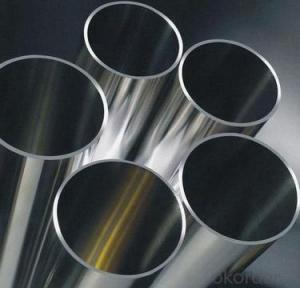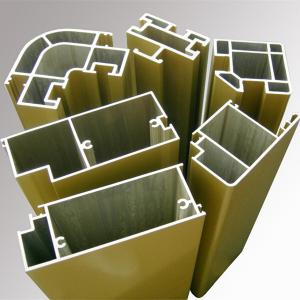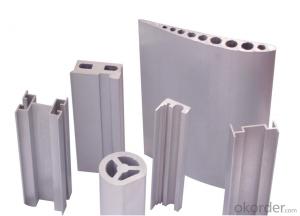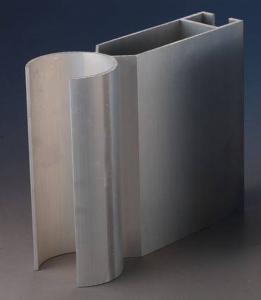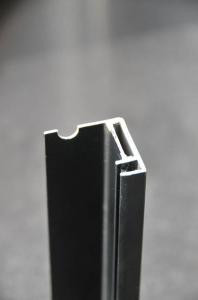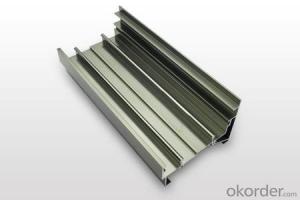Architectural Aluminum Extrusion Profiles
- Loading Port:
- China Main Port
- Payment Terms:
- TT OR LC
- Min Order Qty:
- -
- Supply Capability:
- -
OKorder Service Pledge
OKorder Financial Service
You Might Also Like
Aluminium Profile
Our advantages:
1)we can provide"one- stop service from melting,extruding,surface treatment,machining,welding,assembling to mould design & building.
2)we have a good capacity of precise machining,cnc machining.
3)we can provide good quality with reasonable price.
Products:
Description | Aluminium Profiles |
Alloy | Al 6063 T5 /T6 or 6061 or 6005 or as per customers' need |
Finish | Anodizing or powder coating with various colors |
Packing | Foam sheet,poly bag,plastic bag,carton |
Brand | YMJ |
Original place | |
Certificate | ISO9001 |
Equipments:
7extruders,2 six meters long anodizing lines,1 twelve meters long anodizing line(including dyeing & electrolysis).1 powder coating line,5 melting lines,12 CNCs(including 2 machines which can mill 6.5m long profile),10 argon arc welding machines and multiple machines for cutting,drilling,punching,milling,shearing and bending,2 spectrum scanners,1 projective instument,1 extension test machine,1 mechanical property tester,1 Rohs tester and 1 metallurgical microscope.
Service:
We're a well- established manufacture for aluminium products,we're confident we can give our customers complete satisfication.
We can provide good quality with reasonable price.
- Q: Is it possible to recycle aluminum profiles and repurpose them for different uses?
- <p>Yes, aluminum profiles can be recycled and reused in other applications. Aluminum is highly recyclable, and the recycling process requires significantly less energy compared to producing aluminum from raw materials. Recycled aluminum maintains its properties, making it suitable for a variety of new applications, such as construction, automotive, and consumer goods. The recycling of aluminum profiles not only conserves resources but also reduces waste and environmental impact.</p>
- Q: What are the different tolerance levels for aluminum profiles?
- The tolerance levels for aluminum profiles can vary depending on the specific application and requirements. However, some common tolerance levels for aluminum profiles include dimensional tolerances, such as length, width, and thickness variations, as well as straightness, flatness, and surface finish tolerances. These tolerances ensure the desired precision and consistency in the manufacturing and assembly of aluminum profiles.
- Q: This question asks for a list of various aluminum profiles that are utilized in the construction of building facades and cladding systems.
- <p>Aluminum profiles for facades and cladding systems come in various types, each serving specific purposes in construction. Common types include: 1. <strong>Aluminum Extrusions</strong>: Used for structural support and can be customized for specific design requirements. 2. <strong>Aluminum Channels</strong>: Often used for attaching panels or as a part of the support structure. 3. <strong>Aluminum Angles</strong>: Provide corner support and reinforcement. 4. <strong>Aluminum Flat Bars</strong>: Used for horizontal or vertical support in facade systems. 5. <strong>Aluminum Tubes</strong>: Can be used as a decorative element or for structural reinforcement. 6. <strong>Aluminum Louvers</strong>: Designed for sun shading and ventilation. 7. <strong>Aluminum Panels</strong>: Can be flat or profiled, used for the outer layer of the facade. 8. <strong>Aluminum Trims and Mouldings</strong>: Used for finishing and detailing around windows, doors, and edges. Each type is chosen based on the architectural design, structural requirements, and aesthetic preferences.</p>
- Q: Are aluminum profiles capable of being tailored to fit unique design specifications?
- <p>Yes, aluminum profiles can be customized to meet specific design requirements. This customization includes altering dimensions, surface treatments, and shapes to fit the needs of various applications. Manufacturers can cut, bend, and machine aluminum profiles to precise specifications, allowing for a high degree of flexibility in design and functionality. Customization is often possible through processes like extrusion, which allows for the creation of complex profiles that can be tailored to exacting standards.</p>
- Q: How are aluminum shapes made?
- 3, color (mainly about the oxidation process here first oxidation): extrusion Aluminum Alloy profiles well, its corrosion resistance is not strong, should be to increase the aluminum corrosion resistance, wear resistance and surface by anodic oxidation surface treatment of the appearance of the. The main process is as follows: (1) surface pretreatment: chemical or physical methods are used to clean the surface of the profile and expose the pure matrix to obtain a complete and compact artificial oxide film. The mirror or non light (Ya Guang) surface can also be obtained by mechanical means. (2) anodizing: the surface of the pre processed profiles, in a certain process conditions, the substrate surface anodic oxidation, resulting in a dense, porous, strong adsorption of AL203 film. (3) sealing: the pore space of the porous oxide film produced by anodic oxidation is closed, so that the oxidation film is anti pollution, and the corrosion resistance and wear resistance are enhanced. The film is colorless and transparent, with strong adsorption before sealing film, adsorption and deposition of metal salts in some membrane hole, can make the profile appearance character (silver) show many colors, except such as: black, bronze, golden color and stainless steel etc..
- Q: Can aluminum profiles be used for exhibition stands or booths?
- Exhibition stands or booths can indeed utilize aluminum profiles. The lightweight and robust characteristics of aluminum make it a favored option for constructing such structures. Its ability to provide structural stability, along with the convenience of transportation and assembly, further adds to its appeal. Aluminum profiles are easily customizable, allowing for their seamless integration into diverse designs and configurations, thereby catering to various exhibition needs. Moreover, aluminum's recyclability aligns with the sustainable practices frequently sought after in the exhibition and event industries. In summary, aluminum profiles present a cost-effective and pragmatic choice for the creation of exhibition stands or booths.
- Q: This question asks about the impact of aluminum profiles on the thermal efficiency of a building.
- <p>Aluminum profiles can significantly affect the thermal performance of a building. They are excellent conductors of heat, which means they can transfer heat quickly. This property can be both advantageous and disadvantageous. On the positive side, aluminum profiles can help dissipate heat from the building, reducing the need for air conditioning. However, they can also lead to heat loss in colder climates, reducing the building's energy efficiency. To mitigate this, thermal breaks are often incorporated into aluminum profiles to reduce heat transfer. Additionally, insulating materials can be used alongside aluminum profiles to enhance the building's thermal insulation. Proper design and material selection are crucial to optimize the thermal performance of a building with aluminum profiles.</p>
- Q: What are the different installation methods for aluminum profiles?
- There are several different installation methods for aluminum profiles, depending on the specific application and requirements. 1. Screwed Installation: This is one of the most common methods for installing aluminum profiles. It involves using screws to attach the profiles to the desired surface. The profiles typically have pre-drilled holes to facilitate this process. Screwed installation provides a secure and stable connection, making it suitable for various applications. 2. Welded Installation: In some cases, aluminum profiles are welded together to create a strong and seamless joint. This method is commonly used in structural applications where high strength and rigidity are required. Welded installation can provide a more permanent and durable connection, but it requires specialized equipment and expertise. 3. Bolted Installation: Bolted installation involves using bolts and nuts to connect aluminum profiles. This method offers flexibility as it allows for easy disassembly and reassembly if needed. Bolted installation is commonly used in applications where frequent adjustments or modifications are required. 4. Adhesive Installation: Adhesive installation involves using specialized adhesives or bonding agents to attach aluminum profiles to the desired surface. This method is particularly useful when a seamless and aesthetically pleasing finish is desired, as it eliminates the need for visible screws or fasteners. Adhesive installation is commonly used in applications such as interior design, signage, and display systems. 5. Clamped Installation: Clamping is another method for installing aluminum profiles, especially in applications where a non-permanent connection is required. Clamps or brackets are used to secure the profiles in place, allowing for easy adjustment or removal. Clamped installation is commonly used in applications such as exhibition booths, temporary structures, or modular systems. It is important to consider the specific requirements of the project and consult with professionals or manufacturers to determine the most suitable installation method for aluminum profiles. Factors such as load-bearing capacity, aesthetics, ease of installation, and maintenance should be taken into account to ensure a successful installation.
- Q: What are the different surface embossing options for aluminum profiles?
- Some of the different surface embossing options for aluminum profiles include brushed, mirrored, textured, patterned, and perforated finishes.
- Q: I would like to know where Urumqi has industrial aluminum profiles, such as 3030, 4040, 3060 aluminum, etc., note that industrial aluminum, not doors and windows, aluminum profiles, the difference between the two very large!
- And shares in the east railway station there, the east railway station and then go one Station Road (near the North Main Road) can see.
Send your message to us
Architectural Aluminum Extrusion Profiles
- Loading Port:
- China Main Port
- Payment Terms:
- TT OR LC
- Min Order Qty:
- -
- Supply Capability:
- -
OKorder Service Pledge
OKorder Financial Service
Similar products
Hot products
Hot Searches
Related keywords




